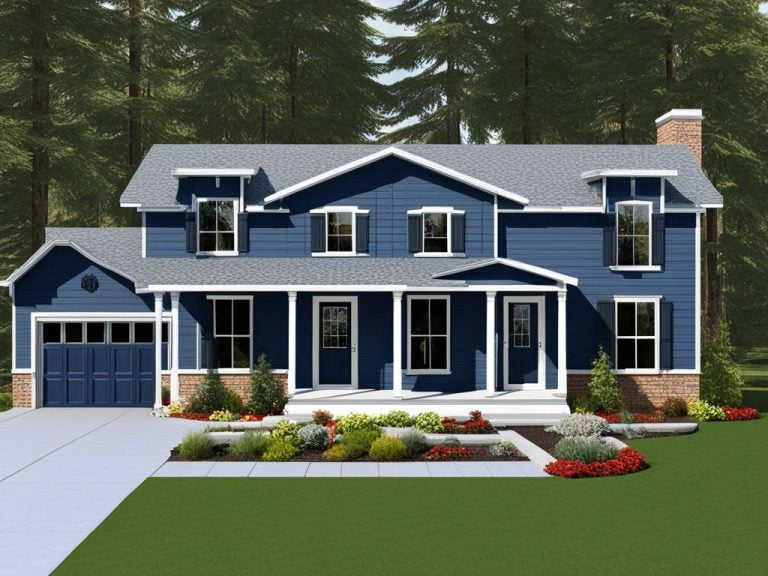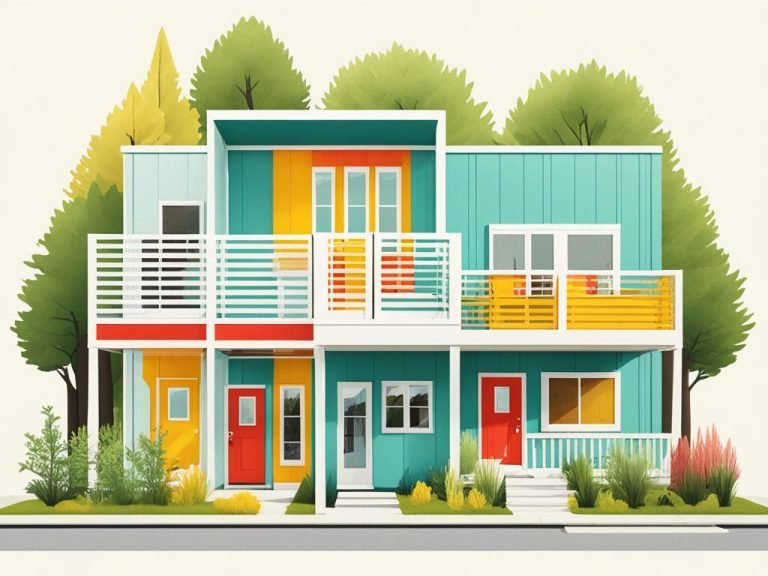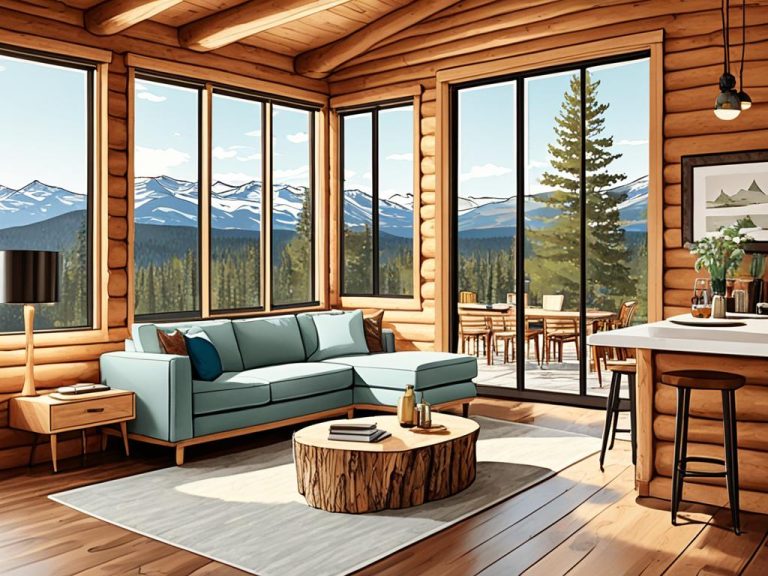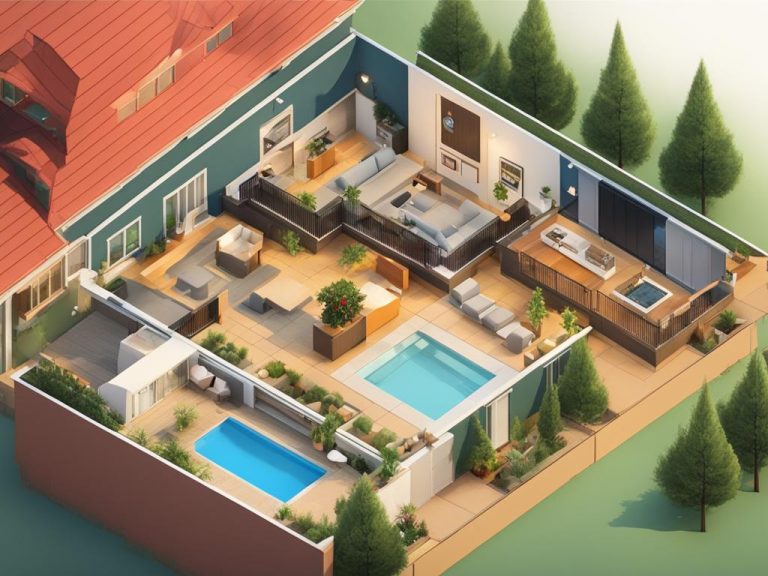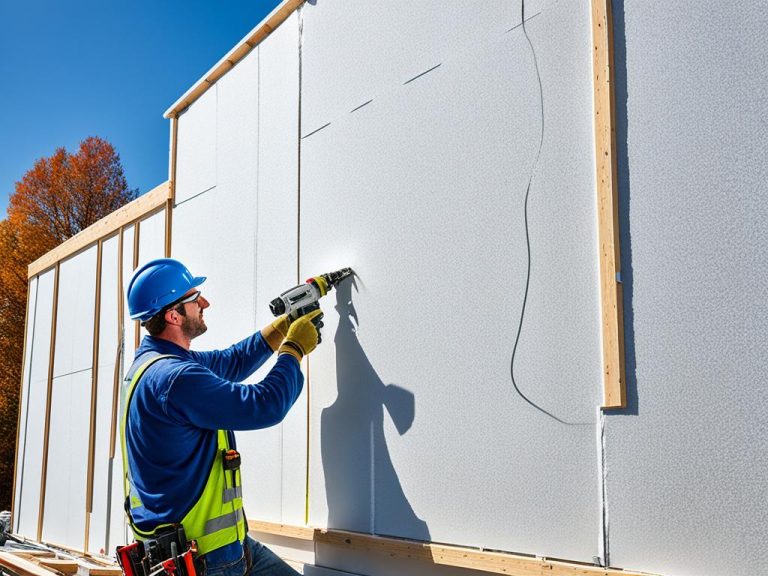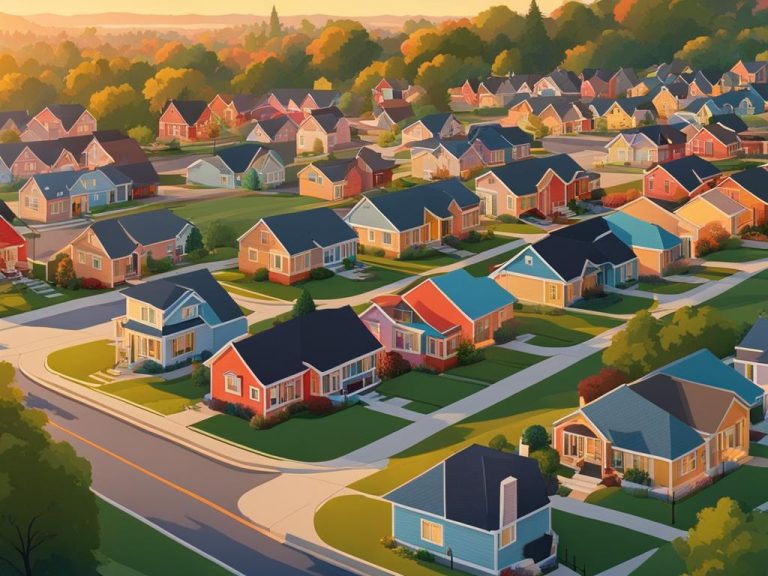The Basic Modular Home Build Process Guide
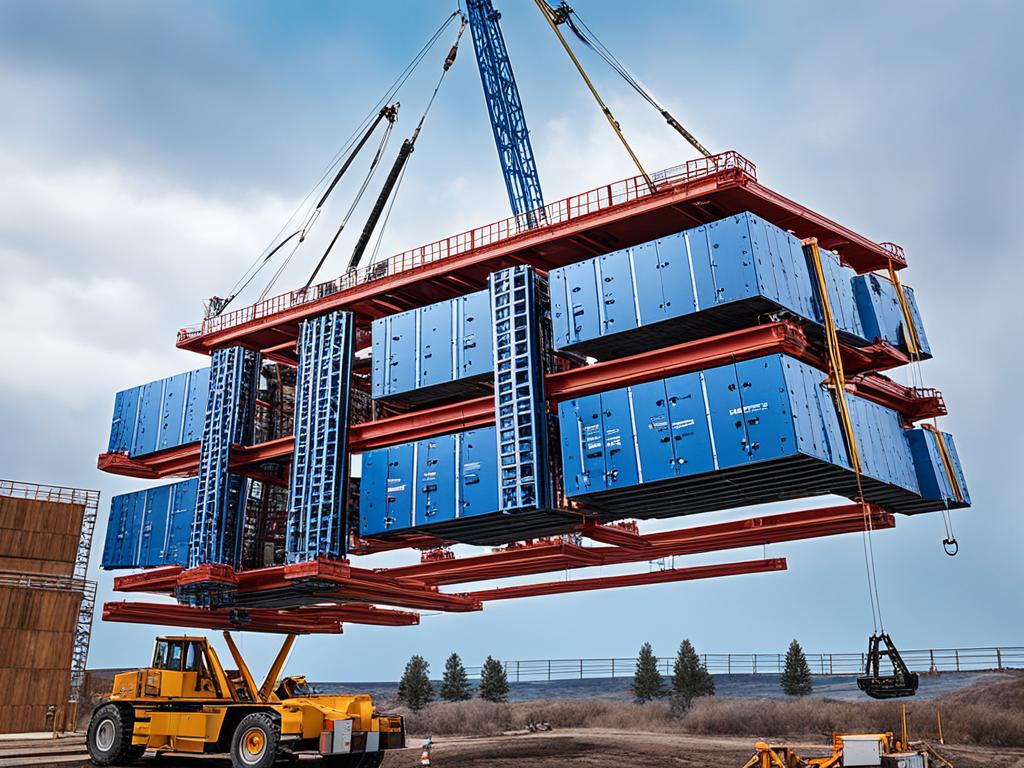
Modular homes have gained popularity as an efficient and customizable alternative to traditional site-built houses. The construction process of modular homes, also known as prefab homes, offers several advantages, including cost savings, faster construction, and energy efficiency. In this guide, we will explore the modular home process, materials used, and the benefits they offer.
Key Takeaways:
- Modular homes are built in a factory and transported to the building site.
- They offer cost savings, customization options, and energy efficiency.
- Modular home construction involves building modules in a factory, transporting them, and assembling them on-site.
- Materials used in modular homes are similar to those used in traditional houses, including stone, brick, or wood for the exterior.
- Modular homes require planning permission and need to meet building regulations.
Benefits of Modular Homes
Modular homes offer a multitude of advantages over traditional homes. One of the key benefits is cost savings. Compared to site-built houses, modular homes generally have lower overall costs, making them an appealing option for homebuyers looking to maximize their budget.
Energy efficiency is another standout feature of modular homes. With optimal insulation and the option to incorporate solar panels, these homes are designed to minimize energy consumption and reduce heating bills, making them more environmentally friendly and economical in the long run.
Customizability is a major advantage when it comes to modular homes. Homeowners have the flexibility to customize both the interior and exterior of their homes, tailoring them to their specific needs and preferences. From floor plans to finishes, the possibilities are virtually endless, allowing homeowners to create a space that truly reflects their style and lifestyle.
When it comes to financing and ongoing costs, modular homes are on par with traditional site-built houses. Home loans, insurance premiums, and taxes for modular homes are generally comparable, ensuring that the financial aspects of owning a modular home are no different from those of traditional homes.
Perhaps one of the most significant benefits of modular homes is the speed of construction. Compared to traditional homes, the modular construction process is significantly quicker. Typically, the structure of a modular home can be built in just one to two weeks, enabling homeowners to move in faster and start enjoying their new space sooner.
Moreover, modular homes have the potential to be excellent investments. While the value of any property can fluctuate, modular homes, like traditional homes, can appreciate over time, providing homeowners with a potentially profitable asset for the future.
When choosing a location for building a modular home, certain factors should be considered. These include the availability of cheap land and a pragmatic local authority that understands and supports the modular home industry.
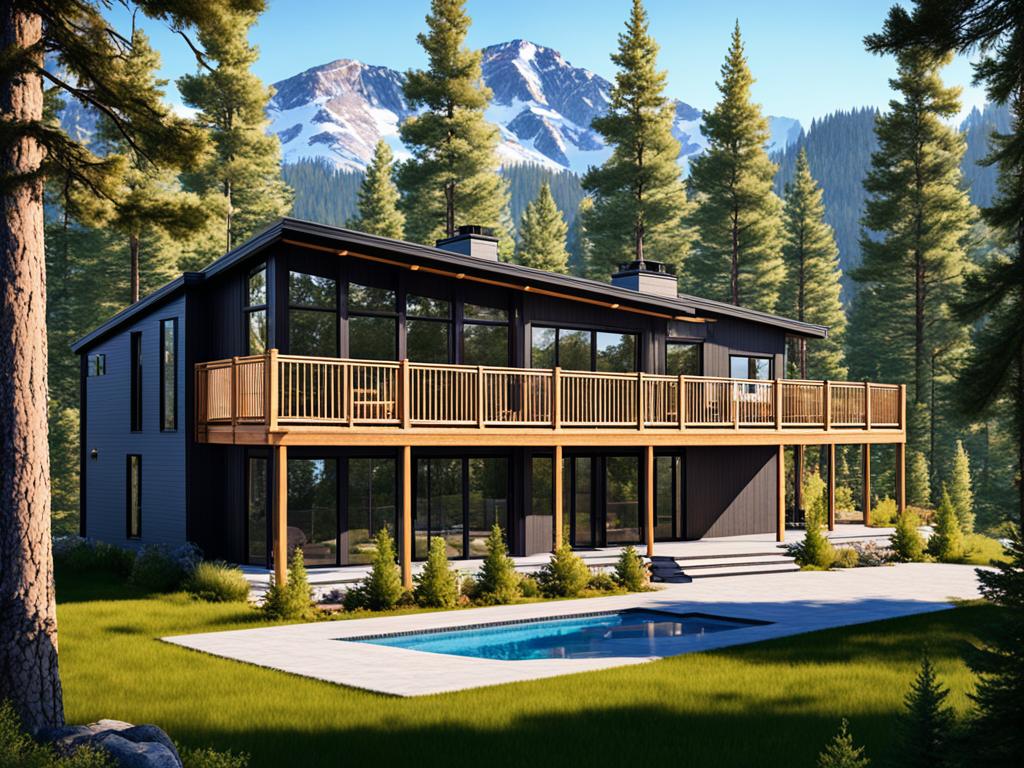
Overall, modular homes truly excel in terms of cost-efficiency, energy efficiency, customizability, and speed of construction. With these benefits, it’s no wonder that the modular home industry continues to thrive, providing individuals and families with a modern and practical housing solution.
Materials Used for Modular Homes
Modular homes are constructed using a wide range of materials, both for the interior and exterior. When it comes to the interior of modular homes, the materials used are similar to those found in traditional houses. This ensures that the interior of a modular home maintains the same level of quality and comfort as a site-built home.
On the other hand, the exterior of modular homes offers a variety of design options. Stone, brick, and wood are commonly used materials that can be used to create different aesthetic styles. These exterior materials not only provide a visually appealing appearance but also contribute to the overall durability and longevity of the home.
However, it’s important to note that modules are often transported without the finalized exterior finish. Instead, the cladding and finishing touches are installed on-site. This allows for more flexibility in design choices and ensures that the exterior of the modular home matches the homeowner’s preferences.
A popular roofing material for modular homes is lightweight steel tiles. These tiles offer durability and a modern aesthetic, while also providing excellent protection against the elements. The use of lightweight materials, such as steel tiles, is one of the reasons why modular homes are known for their energy efficiency.
The choice of materials used for modular homes can have an impact on various aspects, including transportation, weatherproofing, heat retention, and overall cost. Therefore, it’s crucial for homeowners to carefully consider the materials used in the construction of their modular home, taking into account their preferences, budget, and the local climate.
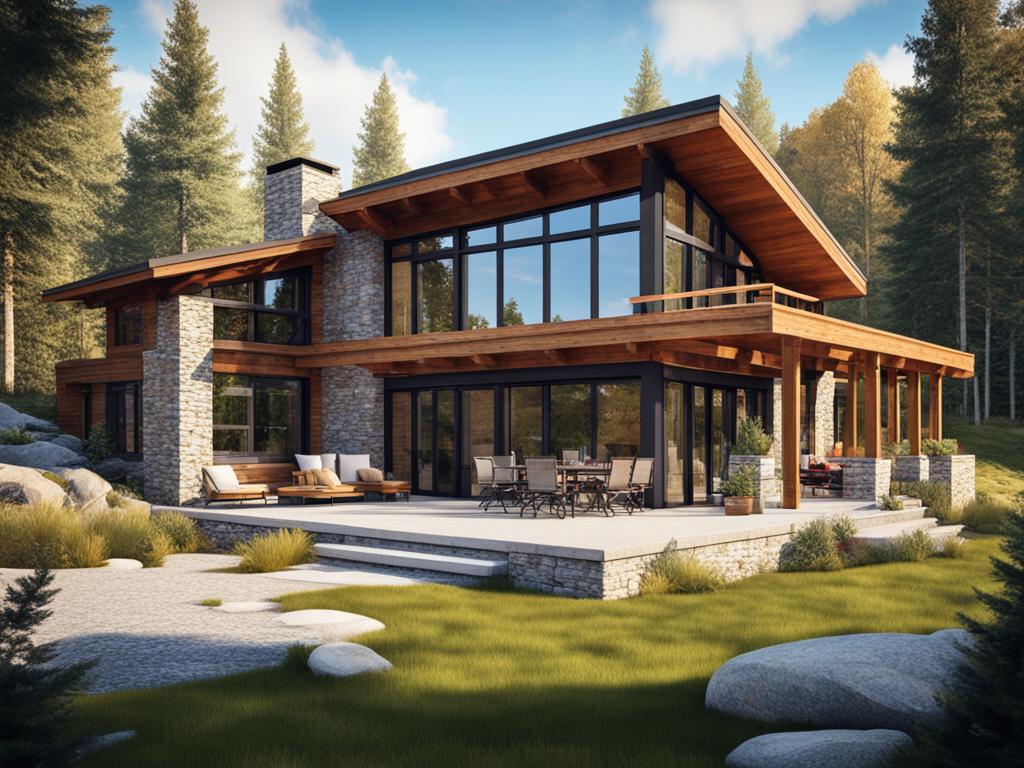
By selecting the right materials, homeowners can customize their modular homes to suit their personal style while also ensuring optimal performance and durability.
Construction Process of Modular Homes
The construction process of modular homes is a well-structured and efficient method that ensures quality and timely completion. Let’s take a closer look at each step involved in the building and transportation of modular homes.
Design and Planning:
It all begins with collaboration between the homeowner and the modular home builder to create a custom design that meets the specific needs and preferences. The design is carefully planned, taking into consideration factors such as layout, size, and architectural style.
Factory Construction and Quality Control:
After the design phase, the modules of the modular home are constructed in a factory-controlled environment. This allows for precise construction and efficient use of materials. Throughout the construction process, quality control inspections are conducted at each step to ensure that the modules meet the highest standards of craftsmanship and compliance with building codes.
Transportation and Assembly:
Once the modules are completed, they are transported to the building site. This transportation can be done using specialized equipment, such as flatbed trucks or cranes, depending on the size and weight of the modules. On-site, the modules are carefully assembled on a permanent foundation, ensuring accurate alignment and structural integrity.
Construction Stages:
The construction process of modular homes involves different stages. Firstly, the frame stage focuses on assembling the structural framework of the home, including walls, floors, and roofs. Secondly, the lock-up stage involves completing the exterior enclosure of the home, including windows, doors, and insulation. The final stage, known as the fixing stage, includes finishing touches such as plumbing, electrical work, and interior fittings.
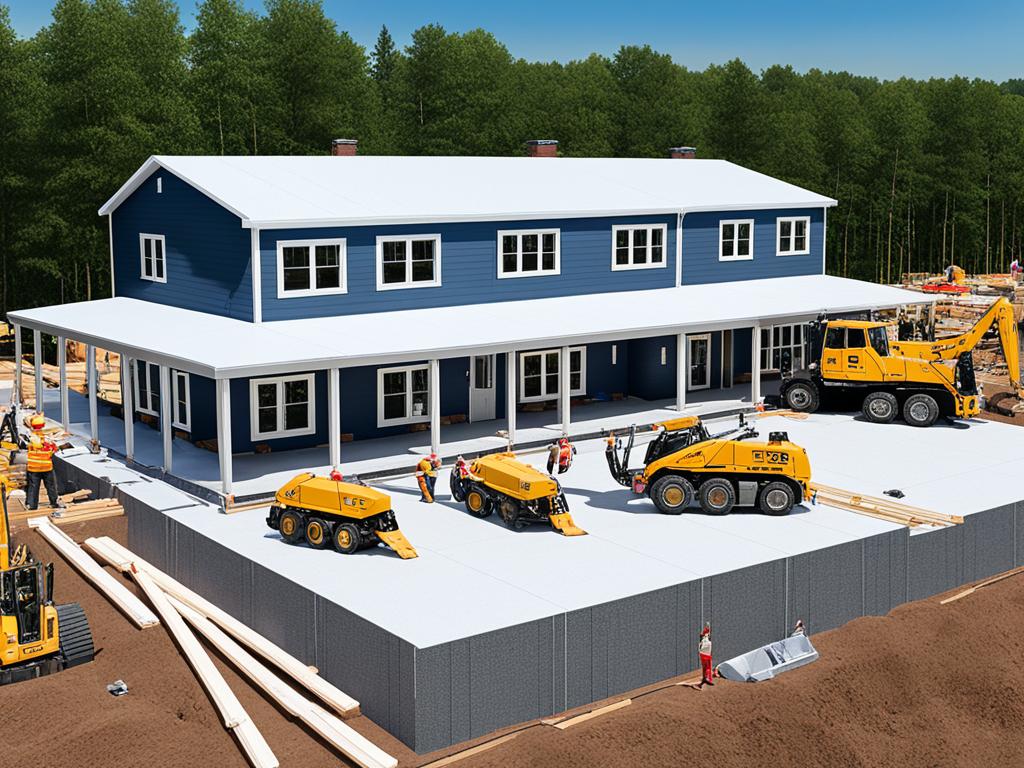
Finishing Touches and Inspections:
Once the modules are assembled, the finishing touches are added to the modular home. This includes connecting the utilities, installing fixtures, and adding any personalized features. Before the modular home can be occupied, it must pass rigorous local building inspections to ensure compliance with safety and quality standards.
With its streamlined construction process, modular home construction offers numerous advantages, including shorter construction timeframes, superior quality control, and greater flexibility in design customization. Whether you are looking for a cost-effective housing solution or a sustainable and energy-efficient home, modular homes provide a modern and practical choice.
Conclusion
Modular homes offer a cost-effective and customisable alternative to traditional site-built homes. With their construction taking place within a factory setting, modular homes undergo rigorous quality control measures. They also offer energy-efficient features, enabling homeowners to save on their utility bills in the long run.
One of the key advantages of modular homes is their faster construction process compared to traditional homes. Built in sections or modules, these homes can be completed in a fraction of the time it takes to build a site-built home. This means that homeowners can move into their new modular home sooner and start enjoying the benefits it offers.
It’s important to note that, like traditional homes, modular homes must comply with building regulations and obtain planning permission. The financing options available for modular homes are similar to those for conventional homes, providing opportunities for homeowners to secure loans or mortgages to fund their purchase.
Overall, modular homes present a smart choice for anyone looking for a new home. They offer cost savings, customisation options, and a faster construction process. With financing options available and their compliance with building regulations, modular homes provide an attractive and practical solution for those seeking a quality, energy-efficient home.
FAQ
What is a modular home?
A modular home is a house built within a factory and then transported to the building location.
What are the benefits of modular homes?
Modular homes are customizable, energy-efficient, and can be built in a shorter timeframe compared to traditional site-built homes. They also offer cost savings, faster construction, and the same quality as traditional homes.
What materials are used for modular homes?
The materials used for modular homes are similar to those used in traditional homes, including stone, brick, or wood for the exterior. Lightweight tiles made of steel are a popular roofing material for modular homes.
What is the construction process of modular homes?
The construction process involves building modules in a factory, transporting them to the site, and assembling them on a foundation. The modules are often transported without the finalized exterior finish, with cladding and finishing touches installed on-site.
How do I finance a modular home?
Financing options for modular homes are available, similar to those for traditional homes. Home loans, insurance premiums, and taxes for modular homes cost the same as site-built houses.

